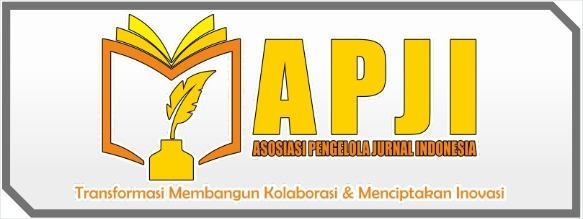Hubungan Pengetahuan Ibu Hamil Dengan Perilaku Pencegahan Sibling Rivalry di Puskesmas Kagok
DOI:
https://doi.org/10.59581/diagnosa-widyakarya.v2i4.4210Keywords:
Knowledge, Prevention, Sibling rivalry, Pregnant womenAbstract
The phenomenon of sibling rivalry and its impacts encourage the need for efforts to prevent it. The purpose of the study was to describe the characteristics of pregnant women, the level of knowledge of pregnant women about sibling rivalry, the level of behaviour of pregnant women in preventing sibling rivalry, and analyze the relationship between knowledge of pregnant women and behaviour in preventing sibling rivalry. The research method used a quantitative approach with a correlational type. The population was pregnant women who had children aged a maximum of 3 years and checked their pregnancy at the Kagok Semarang Health Center. The number of samples was 63 people. The side technique used total sampling. Data were obtained using a questionnaire and then analyzed with descriptive statistics and the Fisher exact test, a statistical test used to determine if there are nonrandom associations between two categorical variables. The results of the study were the characteristics of pregnant women, the majority aged 20-35 years, parity less than or equal to 3 births, high school education, working and family income according to the UMR. The level of knowledge of pregnant women about sibling rivalry tended to be less good, and the level of behaviour of pregnant women in preventing sibling rivalry tended to be quite good. There was a very significant relationship between knowledge of pregnant women and behaviour in preventing sibling rivalry (chi-square = 49.810 and p <0.05). The conclusion is that pregnant women's knowledge is a factor in preventing sibling rivalry behaviour.
References
Andriyani, S., & Darmawan, D. (2018). Pengetahuan ibu tentang sibling rivalry pada anak usia 5-11 tahun di Cisarua Kabupaten Bandung Barat. Jurnal Pendidikan Keperawatan Indonesia, 4(2), 162–171. https://doi.org/10.17509/jpki.v4i2.13708
Asiyah, N., Mashitoh, A. R., & Kristiani, D. (2019). Sibling rivalry dengan bounding attachment pada ibu nifas. Jurnal Ilmu Keperawatan Dan Kebidanan, 10(1), 196–205. https://doi.org/10.26751/jikk.v10i1.523
Cindy, B., & Hendriati, A. (2020). Sibling rivalry in 2-4 years old children: Maternal management based on emotion coaching concept. Psikodimensia, 19(1), 86–93. https://doi.org/10.24167/psidim.v19i1.2070
Elinda, F., & Mulyani, D. (2022). Analisis perilaku sibling rivalry pada anak usia 2-3 tahun di Kabupaten Bandung. Jurnal Riset Pendidikan Guru Paud (JRPGP), 2(1), 1–8. https://doi.org/10.29313/jrpgp.vi.608
Notoatmodjo, S. (2010). Kesehatan masyarakat: Ilmu dan seni. PT Rineka Cipta.
Oresti, S., Ramani, & Handiny, F. (2024). Factors contributing to sibling rivalry among preschool children. Jurnal Ilmiah Ilmu Keperawatan Indonesia, 4, 130–137. https://doi.org/10.33221/jiiki.v13i04.3019
Putri, N. P. C. D., Dewi, K. A. P., & Darmayanti, P. A. R. (2023). Hubungan pengetahuan ibu hamil terhadap perilaku pencegahan sibling rivalry di Puskesmas Abiansemal I. Jurnal Formil (Forum Ilmiah) Kesmas Respati, 8(2), 138–155. https://doi.org/10.35842/formil.v8i2.492
Putri, S. K., & Budiartati, E. (2020). Upaya orang tua dalam mengatasi sibling rivalry pada anak usia dini di KB TK Tunas Mulia Bangsa Semarang. E-Plus: Jurnal Eksistensi Pendidikan Luar Sekolah, 5(1), 75–87.
Rachmawati, W. C. (2019). Promosi kesehatan dan ilmu perilaku. Wineka Media.
Rahmawati, S. A., Dewi, L. P., Rohmah, A. N., Primindari, R. S., Rahmawati, E. I., & Irawan, D. D. (2022). The incident of sibling rivalry on child with mother breastfeeding during pregnancy. Jurnal Midpro, 14(1), 93–100. https://doi.org/10.30736/md.v14i1.346
Ulkhatiata, I. T., & Diana, R. R. (2023). Pola asuh orang tua dalam mengatasi perilaku sibling rivalry pada anak usia dini. JECED: Journal of Early Childhood Education and Development, 5(1), 1–15.
Volling, B. L., Kennedy, D. E., & Jackey, L. M. (2010). The development of sibling jealousy. In S. L. Hart & M. Legerstee (Eds.), Handbook of jealousy: Theory, research, and multidisciplinary approaches (pp. 387–417). Blackwell Publishing Ltd. https://doi.org/10.1002/9781444323542.ch17
Wahyu, W., Widyaningsih, T. S., & Aini, K. (2017). Kesiapan orang tua dalam menghadapi sibling rivalry pada anak usia toddler. Jurnal Ners Widya Husada, 4(1), 35–40.
Wati, L., Siagian, Y., Kurniasih, D., & Manurung, T. H. (2020). Faktor dominan yang mempengaruhi sibling rivalry pada anak usia toddler. Jurnal Keperawatan, 10(1), 1–10.
Yektiningsih, E., Yuliansari, P., & Firdausi, N. (2022). Hubungan tingkat sibling rivalry dengan pengetahuan orang tua dan perkembangan pada anak usia prasekolah. Jurnal Ilmu Kesehatan, 11(1), 80–87.
Zakaria, R., Podungge, Y., & Agustini, R. D. (2021). Factors associated with sibling rivalry behavior in toddlers. Journal of Noncommunicable Disease, 1(1), 7–17. https://doi.org/10.52365/jond.v1i1.221
Downloads
Published
How to Cite
Issue
Section
License
Copyright (c) 2024 DIAGNOSA: Jurnal Ilmu Kesehatan dan Keperawatan

This work is licensed under a Creative Commons Attribution-ShareAlike 4.0 International License.













